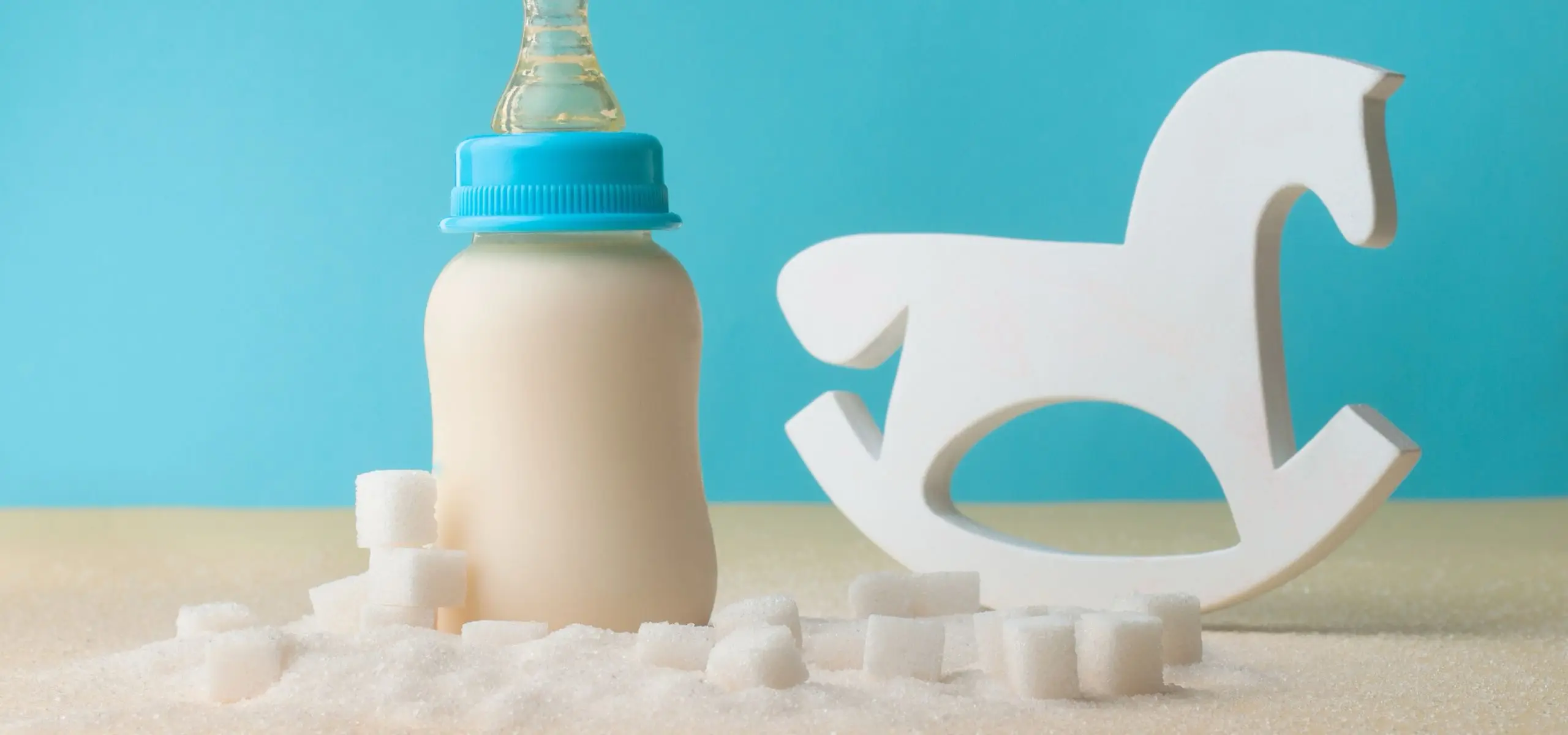Petua Untuk Ibubapa /
The Lowdown on Sugars in Milk Formulas

Do you ever wonder what’s typically in a growing up formula? If you’re been thinking about the sugar content in your child’s favourite milk, here’s an overview of the types of sugars available and what you should be looking out for on the nutrition and ingredient label.
Sugar is divided into natural sugars and added sugars.
Natural sugars:
- Lactose (naturally occurring in breast milk)
- Fructose (naturally found in fruits)
- Maltose (naturally present in starchy grains or vegetables)
Added sugars:
- Sucrose (scientific name for table sugar)
- Dextrose
- Glucose syrup
- Corn syrup
The 3 most common sugars available in milk formulas are:
Lactose
Much of the carbohydrates in breast milk as well as cow’s milk are due to lactose. On a sweetness scale of 100, where the highest sweetness index is sucrose (table sugar), lactose is only on a humble 16. Despite its connotations, lactose is actually beneficial for gut health as it promotes the growth of good bacteria. Thus it is not something to shy away from. For little ones with sensitive stomach, opt for reduced lactose instead of lactose free.
Verdict: lactose is beneficial √
Sucrose
Sucrose is commonly found in growing up formulas. It is the sweetest sugar at a sweetness score of 100. Formula that contains sucrose causes the child to crave sugar which may lead to childhood obesity. If you are wary of consuming sugar in your coffee, you should be concern of seeing it on your child’s formula.
Aside from normal milk formulas, it is also typically found in partially hydrolysed formulas which have a bitter taste; or soy and lactose-free formulas which don’t have the sweetness that children are used to. Thus sucrose is usually added to enhance the palatability.
Verdict: sucrose is to be avoided x
Corn Syrup & Corn Syrup Solids
Corn syrup is an artificial sweetener and our body doesn’t break them the same way we do with natural sugars. Corn sugar may also have a larger impact on insulin since it contains twice as much glucose per gram vs lactose. Its sweetness score can range anywhere between 23 -40 depending on how much it is broken down. It cost less than sucrose and more commonly found in formulas formulated by American companies.
Verdict: corn syrup is to be avoided if there are no better options x
Sugars are listed as carbohydrates on the nutrition label. Therefore, spend a couple seconds to review the label; if the types of sugars are not listed on the packaging, it would be a good idea to verify the type of carbohydrates used in the formula with the company.